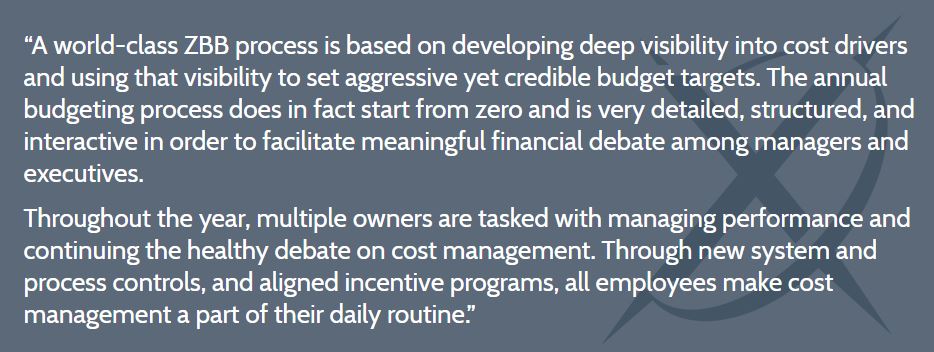
Posts Tagged "business offer"
Ever Hear of ZBB? It Can Make You $$$
If you intend to exit by selling your company, either to an outside buyer (a competitor, private equity group, etc.) or an inside buyer (one or more employees), the price you receive at sale will likely be closely tied to the company’s earnings. The higher the earnings, the higher the likely sale price.

As we know, there are two potential ways to grow earnings — increase revenue and decrease expenses. Both methods can maximize earnings prior to selling your business. In our experience, many companies underestimate the amount of expense reduction that is possible prior to selling the company, without harming morale, the team, or key operations.
Remember, if you sell your company for a multiple of six times earnings (commonly calculated as your adjusted EBITDA), then every $1 of expenses you reduce potentially adds $6 to your selling price. Expense reduction prior to sale is a significant opportunity that many owners miss.
How ZBB Can Help Transform Cost Management
That’s where ZBB comes in to help. ZBB stands for zero-based budgeting, and it’s a little-used and often-misunderstood financial management tool. Zero-based budgeting simply means creating an annual budget for the company by starting at dollar zero, then adding expenses into the plan from there.
For each new expense, company management has to justify the item and amount, thus forcing a rigorous and thorough line-by-line examination of expenses that challenges old assumptions and habits each step of the way. (“Why do we spend money on that? Gee, I am not sure. I guess because we always have…”)
An excellent online article from McKinsey, one of the world’s largest consulting companies, describes how ZBB transforms cost management:

Create a Culture of Accountability and Transparency
Learning and adopting ZBB does not require nor lead to cutting expenses to the bone, as the McKinsey article points out. ZBB compels a more thorough, transparent, and objective look at expenses than many companies would otherwise implement.
When going through a ZBB exercise, it can be helpful to ask aloud “would anybody miss that?” as you and your team consider adding items back into the budget, working up from zero. If you don’t hear a loud outcry within the company that a certain expense would be sorely missed, that’s a clue that the expense in question might be better converted into a savings.
Properly implemented, ZBB is more surgical than draconian, and it can help create a culture of ownership thinking, accountability, and transparency.
Why ZBB Is a Worthwhile Effort
Many business owners, CFOs, and leadership teams are unfamiliar with ZBB and its methods. Some try ZBB but get bogged down in the details. Others fail to realize that ZBB is more than just a financial exercise; implementing ZBB can require rethinking employee communications, internal reporting, and even executive compensation.
The effort can be worth it. Following ZBB practices and principles, it is not usual for companies to realize high single-digit or low double-digit reductions in SG&A expenses. Sustained until company sale, that reduction can generate dramatic returns from increased selling price.
To learn more about ZBB, task the company CFO with studying the issue and reporting his or her findings to the team. There is excellent information online, including the article cited above as well as this article by Forbes. Additionally, contact us at NAVIX to discuss your exit plans and how we can help you and your team maximize your company’s sale price at exit.
To discuss your unique business, and how to plan for and achieve a successful exit, Call 772-210-4499 or email Tim to schedule a confidential, complimentary consultation.
 Tim is a Consultant to Business, Government and Not-for-Profits Organizations specializing in innovative and challenging ways for organizations to survive, to thrive and to build their teams.
Tim is a Consultant to Business, Government and Not-for-Profits Organizations specializing in innovative and challenging ways for organizations to survive, to thrive and to build their teams.